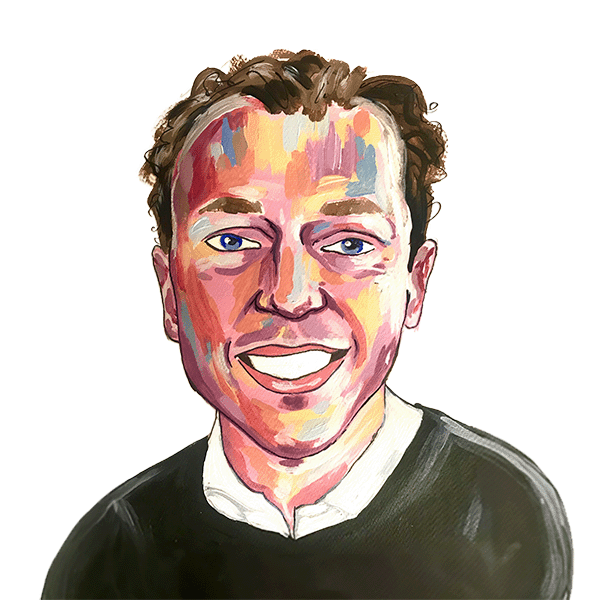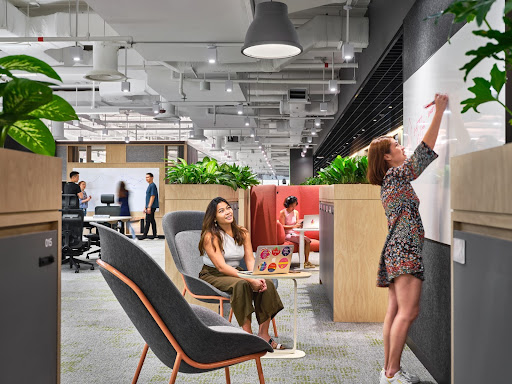Improving Workplace Experience Through Space Optimisations

Our work in Spotify’s Global Workplace Services (GWS) team is never static – it’s part of our company culture to embrace change, and all of us working within the People Constituency at Spotify challenge our chosen truths, and make bold HR and workplace decisions. We’re a company that invests in people, processes and ways of working, and we know that as technologies transform, our workplace design must also evolve.
Even before the pandemic and the subsequent paradigm shift, we had foresight that the office spaces of the future needed to be more dynamic. In the last couple of years, in particular since introducing our Working From Anywhere (WFA) program, we’ve doubled-down on listening to our band members as we’ve navigated this new set-up with a trial and error mindset. In addition, we like to be data-informed about our decisions and have invested in some technology (space utilisation sensors) that can help us better understand the use of each space in the office, without making assumptions that are tied to old rhetoric about workplaces.
Combining these two inputs with our insights as experts in space design and management has allowed us to make the future use of our workspace less unpredictable and to be able to focus on improving the workplace experience for our employees.
Being Data Informed
Within the GWS team, our main objective is to make Spotify a great place to work by providing spaces and services that bring our culture to life. We are here to provide a great workplace experience by enabling collaboration and productivity, fostering belonging and community and representing our brand (from a customer, partner and employee perspective).
One key aspect of this is to make sure we optimise our utilisation of our office space. If we do this correctly it will improve experience and as positive side effects reduce our cost and at the same time our environmental footprint. It’s a win-win-win situation.
Optimising Our Spaces
To guide our decision about how best to optimise, we carry out in-depth analyses on usage of workstations, meeting rooms, common areas etc. Without data, knowledge and a clear process we would never be able to make decisions confidently, or execute a project smoothly.
For example, the amount of desk space is a hot topic. Does it really make sense to design office space for everyone to have their own desk? We don’t think so. Based on our manual occupancy studies from back in 2019 we saw that the average peak usage of workstation was around 35%. And those were the days when everyone worked full time from the office. For a company like Spotify, pushing in more desks is not sustainable. So when the time came to revamp and design our offices, it was a no-brainer to move away from dedicated desks. We have not totally forgotten about the desk – it’s still an important element of an office landscape, but a mix of desks that anyone can use and meeting spaces in an open-plan environment provides greater convenience – and better flexibility.
Another example comes from our office in New York City, where insights showed us that we can improve workplace experience by bringing people and teams closer together, and simultaneously using our resources in a responsible way, by reducing our office space. The biggest challenge is to make this reduction in space without reducing the amount of meeting rooms too much.
We do similar things across our portfolio and we strongly believe it makes sense to let other companies use our already built out spaces instead of building new buildings or running fit out projects which both will increase usage of raw material and add CO2 emissions.
Growth without growing
Optimising doesn’t necessarily mean reducing space. Where we’re welcoming new band members, our previous default solution would be to add more space. Now we do it differently.
We analyse the data we have, both quantitative and qualitative, and then we look at the expected growth and see how we can accommodate new band members without growing in square feet. This could mean rebalancing the office space with regards to desks and meeting rooms, increasing the amount of common spaces or merging small neighbourhoods.
Our data tells us that the utilisation of workstations are always much lower than the utilisation of meeting rooms. We also learnt that big meeting rooms are rarely used to their full capacity. And we know that dividing the offices into too small neighbourhoods impacts utilisation negatively. These are all great insights that guide our decisions in this uncharted territory. We might not always get it right the first time, but we know we are acting and designing on more than a gut instinct.
New Offices
In some locations we have maximised usage and need to find more new space to enable growth. Once again, being data informed helps us to keep workplace experience top of mind.
We make sure we capture learnings from our space utilisation sensors, using the insights gathered to help us design and build out any new office space. We always use a people centric approach by capturing the specific needs from every location, only backing up that location-specific information with data from our full portfolio as an additional source where needed.
Finding The Perfect Balance
Similar to many other companies we see that the highest utilisation occurs in the middle of the week, with Mondays and Fridays being the days of quieter footfall in the office.
This is reflective of human and group behaviour – after all, we know that one of the main reasons for a band member to work from the office is to meet, socialise and collaborate with their colleagues, so it makes perfect sense that they may choose to use the office on the same days. From a pure utilisation perspective it would be better to flatten the mid-week peak to maximise the usage of our offices.
Our current challenge is whether we can do that without compromising on workplace experience (there’s no point flattening the peak if our employees don’t get the full benefit of interaction they are seeking). That’s why we’ve started to look into whether we can make changes but still maintain collaboration, belonging and connectedness. One great example is to have our in-office events on Mondays and Fridays. This is a tough nut to crack, but we’ll definitely have a go, whilst keeping in touch with the Spotifiers and monitoring data to make sure we don’t tip the balance too far in either direction.
In fact, in true Spotify fashion we can’t claim to have all the solutions yet, but optimising the office space and our real estate portfolio is not a one-off project, it’s an ongoing crucial part of our business. We will continue to learn, test, and iterate, making sure we continuously provide the best possible experience for our band members to collaborate, be creative and enable productivity. And of course we’ll continue to share our progress here!



